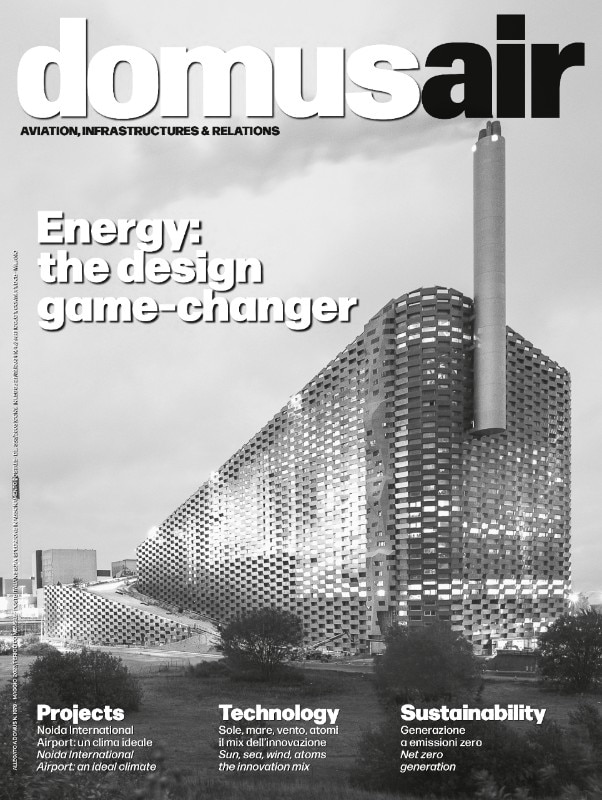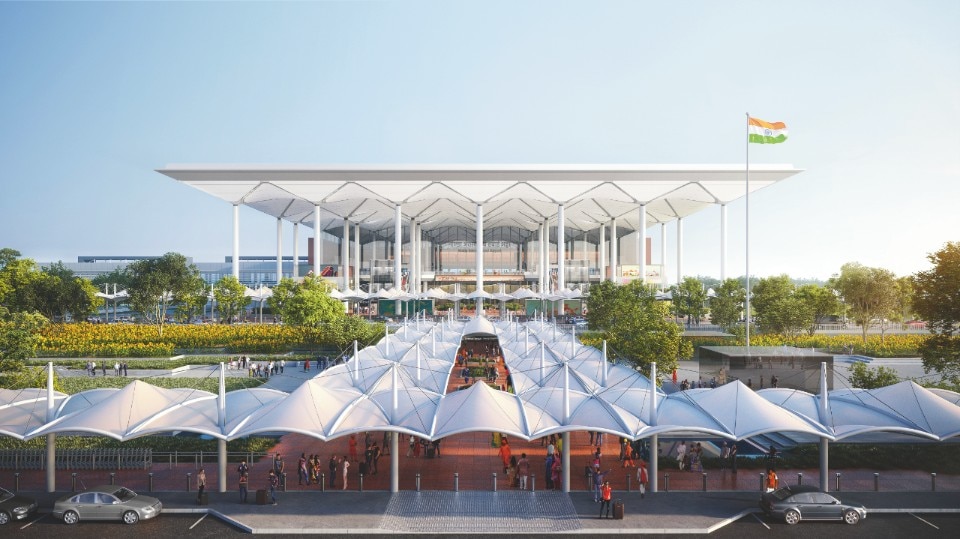Noida International Airport will be India’s first net-zero energy rated airport and the country’s greenest airport, meeting four Indian Green Building Council sustainability target including IGBC New Building Platinum. Located near Jewar in Gautam Buddha Nagar, in the state of Uttar Pradesh in northern India, which is famous for its art and crafts, the terminal will reflect the rich architectural heritage of the region whilst exemplifying sustainable design. An international joint venture including Haptic Architects, Grimshaw and Nordic Office of Architecture was selected to develop the design from concept through to EPC tender by the operator, Yamuna International Airport Private Limited (YIAPL), a subsidiary of Zurich Airport International.
Phase 1 of the airport is under construction and due to be completed by the end of 2024. It will provide a new runway and a 100,000 square metre terminal, capable of serving 12 million passengers per annum. The terminal design has a compact rectangular footprint which offers flexible expansion options, allowing the airport to grow in the future.
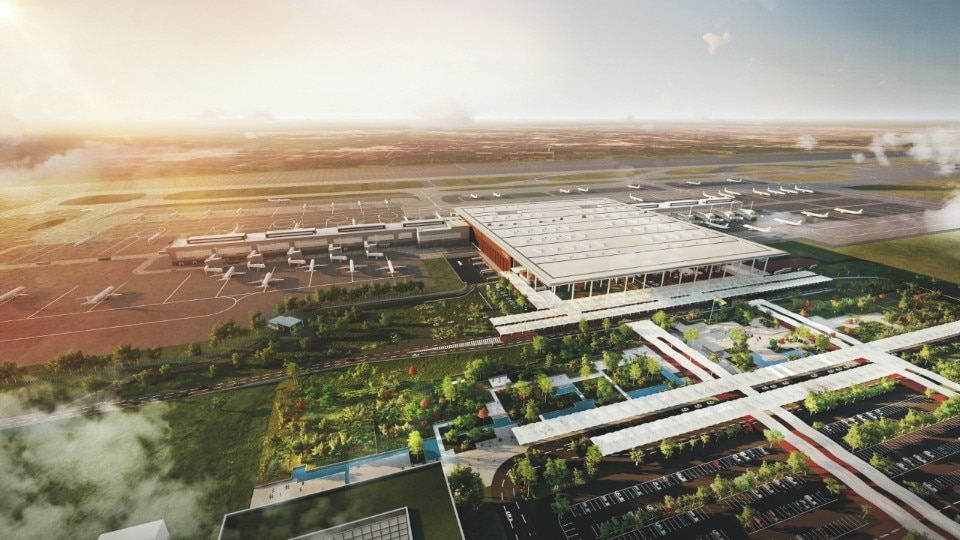
Reaching net zero; passive design first
30 to 40% of the operational carbon reduction will be achieved through integrating passive design measures within the terminal design, which significantly reduce energy demands for mechanical cooling. These include an adaptable thermal comfort range, adopting mixed-mode ventilation and utilising a thermal envelope that balances solar gain mitigation whilst maximising daylight. In addition, the passive design measures will achieve 40-50% reduction in water consumption, 80% water harvesting and storage and a 90% reduction in landfill waste.
These passive measures are combined with the introduction of biophilia, use of local materials and arts and crafts within the terminal design, reflecting the character of Noida and Uttar Pradesh. Examples include the use of local red stone in the check-in hall floor and patterned red-tone aluminium screens in the central office block that re-interpret the traditional Indian ‘Jaali’ screens found in the Agra fort in Uttar Pradesh. Beyond the passive design measures adopted, the terminal will be powered by renewable energy, generated on-site through photovoltaics.
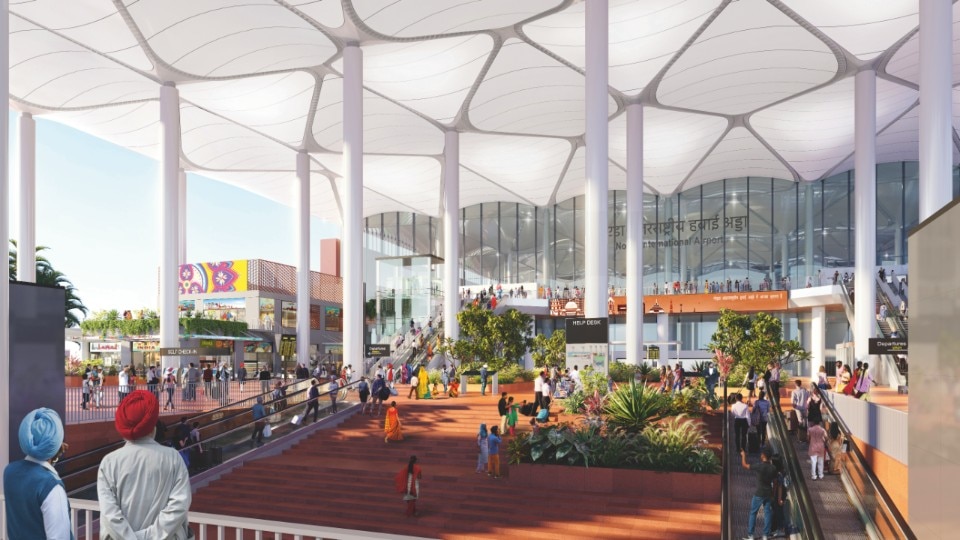
Human centric design
Noida has a contrasting environment; with temperatures reaching 42 degrees celsius in summer and dropping to as low as 7 degrees celsius in winter and strong monsoon rains occurring between July and September. The architectural design team worked closely with the environmental engineering teams Urban Systems Design and AEON to develop an adaptive comfort temperature range across the terminal that responds to the local climate. The transitional environmental experience means temperatures would decrease along the journey through the terminal from transient spaces, such as the check-in hall, to dwell areas where passengers will spend more time, such as the gates. This makes for a more comfortable and healthier passenger experience which also significantly reduces the energy requirements for mechanical cooling.
Park Plaza
The Park Plaza contains the carpark and the future metro linking to Delhi. Arriving passengers transitioning to the forecourt are protected from heat and monsoons by a combination of trees, water bodies and solar canopies forming cooler micro-climates. Green infrastructure measures are provided including local plant species to encourage biodiversity and minimise the need for irrigation. These also work as part of the site drainage strategy and flood mitigation during the monsoon months.
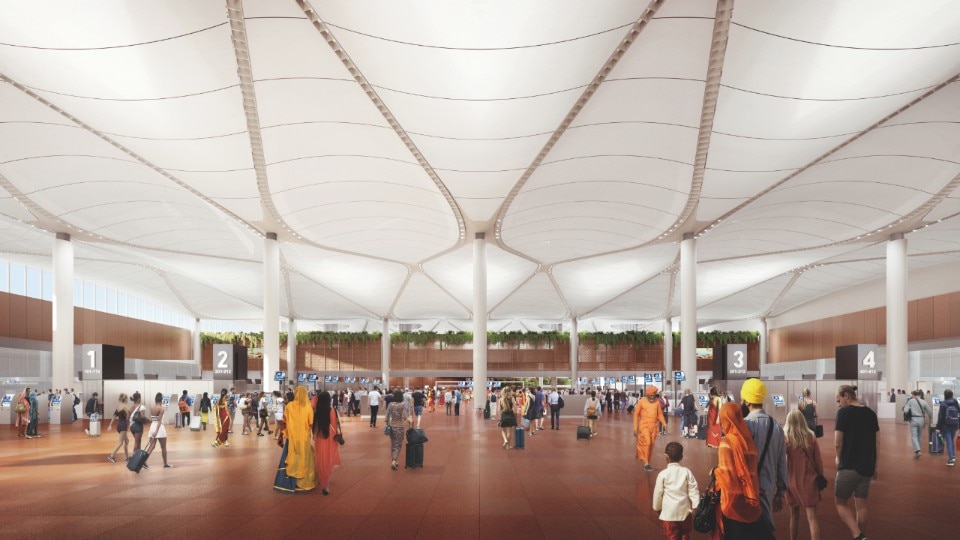
A meeting hub
The forecourt is a generous sheltered outdoor area, where departing and arriving passengers meet under one space. This vibrant space generates commercial revenue with retail and food and beverage units surrounded by landscaping. Centrally, an event space is provided that can be programmed for various events and celebrations throughout the year. A seamless access to the future metro station in the park plaza is provided below the primary access road without any pedestrian crossings via a stepped landscape that is reminiscent of the famous Ghats of Varanasi.
The forecourt significantly reduces the size of the building by transforming the arrival hall – that would typically be internal and mechanically cooled – into an external space which is passively cooled with landscaping and canopies. Another key design aspect of the forecourt was the omission of the raised departures kerb that is typical in airport design. The design team worked with NACO aviation consultants to carefully study the project traffic patterns and model transport split as well as cultural and economic factors determining whether passengers would be expected to drive or rely on metro. The omission of the kerb prioritises pedestrian the experience and public transport over private cars, thus further reducing embodied carbon and providing economical solution for the airport.
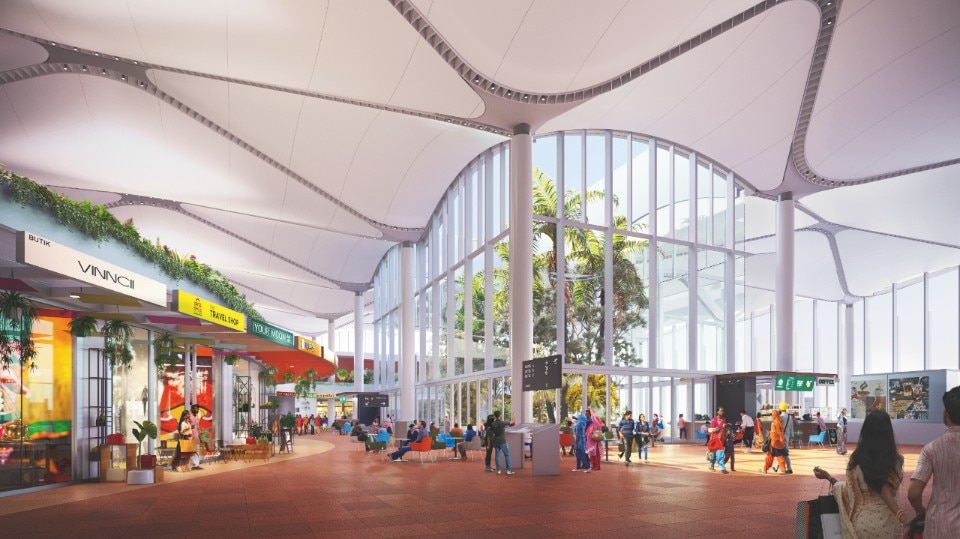
The courtyard and the passive cooling
Within the heart of the domestic airside zone, an outdoor courtyard with local trees and seating is proposed, reminiscent of the haveli courtyards found throughout the region. The courtyard will bring daylight deep into the terminal. It can be opened up two thirds of the year, offering opportunities for passengers to step outside and relax before proceeding to their gates. The courtyard also has notable environmental benefits. By creating openings deep within the terminal plan, the courtyard enables natural ventilation during the mild seasons which further reduces the demand for active cooling. In addition, integrated within the planters and seating are louvres that bring air into the air handling units located in the plantrooms directly below. This air is brought in at a much cooler temperature compared to the air at roof level, thus requiring less energy to cool it for the Heating, Ventilation, and Air Conditioning (HVAC) system.
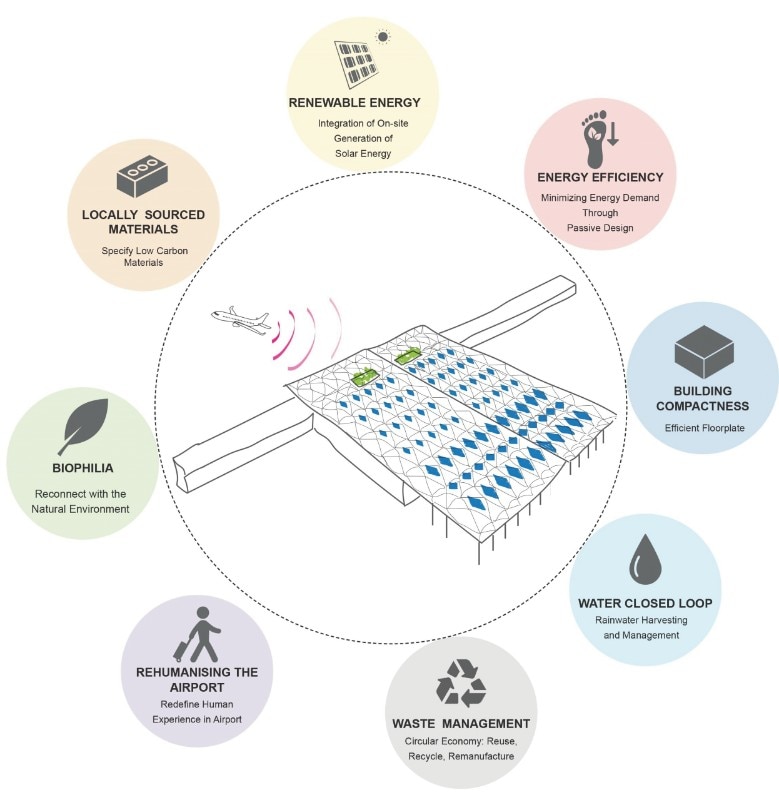
Reducing solar exposure and maximising daylight
The envelopes of the building are optimised to maximise daylight in internal spaces whilst reducing solar exposure by 60-70% by varying the amount of glass and opaque materials across the four façades according to their solar orientation.The west-facing façade is predominantly solid to shield against the low warm sun in the summer. It comprises deep vertical fins angled towards the sun to protect windows behind from direct solar gains whilst enabling diffused daylight and views out. The vertical fins are constructed out of red-tone GRC, echoing the area’s local vernacular architecture of red sandstone and traditional Jaali screens.
Where the western façades use vertical fins, the southern façades are sheltered by horizontal overhangs and louvres, adapting to the sun’s orientation. The northern façades are fully glazed to maximise daylight and provide views out to the runway. The terminal roof has a flat standing seam roof which is sloped toward the perimeter gutters for robust water management, especially during the monsoon months. Water is stored for terminal use and landscape irrigation. The structure of the roof, developed with AKTII and Assystem STUP, comprises tapered steel trusses laid out in a diamond arrangement in plan. Diamond skylights are evenly distributed throughout the centre of the roof whilst a tensile high-tenacity polyester yarn soffit undulates beneath, reminiscent of the river Yamuna. Together, they provide good annual diffused daylighting for over 88% of the check-in hall and the domestic airside zone whilst avoiding any over-heating.

